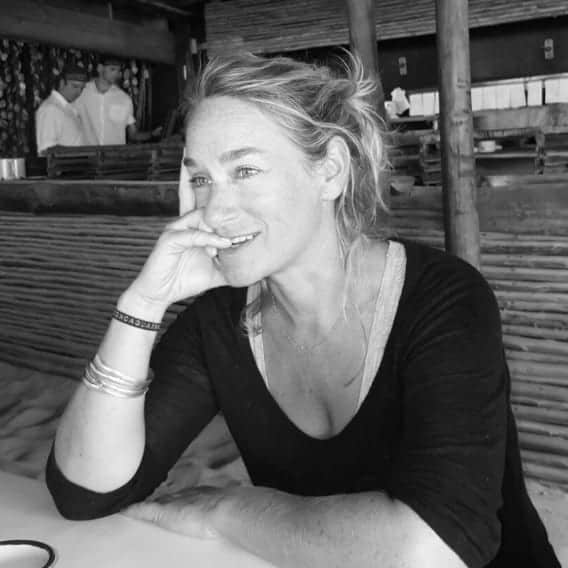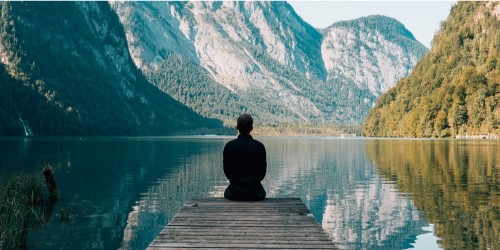
MysticMag has the pleasure of chatting with Louise Shanagher, a mindfulness teacher, children’s therapist, and author from Co. Roscommon, Ireland. She holds a BA and MSc in Psychology, along with qualifications in mindfulness, psychotherapy, and play therapy. Founder of the Creative Mindfulness method, Louise specializes in teaching mindfulness and self-compassion. She is the author of Ireland’s first mindfulness book series for children and co-author of The Mindful Heart curriculum. Passionate about the transformative power of mindfulness, Louise has shared her teachings with thousands globally.
Louise, what inspired you to start your journey in Creative Mindfulness, and how has this practice transformed your personal and professional life?
What initially inspired me was my own meditation practice, which I began over 15 years ago. I experienced profound benefits from meditation, and it truly transformed my life, enhancing my overall well-being, mental health, and happiness. As I delved deeper into this practice, I realized how much I wished I had learned these skills earlier in life, and this sparked my desire to teach meditation to children. I felt strongly that it was an invaluable tool that could provide immense support, just as it had for me.
Additionally, I’ve always been a creative and crafty person, so I developed an approach to teaching mindfulness to children through creativity, activities, stories, and playful, engaging methods. I found that this resonated well with kids, helping them grasp abstract concepts in a more tangible and bold way. Through this approach, children seemed to not only understand mindfulness but also learn to be more compassionate toward themselves and others.
This realization became the foundation of my work—my belief that teaching mindfulness to children could make a significant difference, not only in their individual lives but in the world at large. I truly believe in the idea that inner peace fosters outer peace, and that when we cultivate more peace and happiness within ourselves, it creates a ripple effect that extends into the broader world.
As for how quickly children show results, sometimes even a single session can make a noticeable difference. They might start by simply becoming aware of their breath or recognizing that it’s okay to feel whatever emotions arise. However, in most cases, I structure the classes in blocks of six to eight sessions, which allows them time to fully integrate and practice what they’ve learned. While one session can be impactful, a series of classes offers children the space and time to truly internalize these valuable skills.
How does the Creative Mindfulness Kids Method integrate creativity, art, and mindfulness to engage children, and what impact have you observed in the children you’ve worked with?
When you think about mindfulness, meditation, compassion, and related concepts, they can often feel quite abstract—even for adults. These ideas can be very conceptual, which is why I’ve found that incorporating creativity and hands-on activities makes them more tangible, real, and experiential for children. When kids are actively engaged in creating something—whether it’s a mind jar, a worry monster, or a gratitude tree—it becomes a personal experience for them. The act of making these items helps them to integrate the practices or ideas in a deeper, more meaningful way. And since these creative projects are something they can keep, they also serve as tools they can practice with repeatedly, reinforcing the lessons.
I’ve observed that this approach has a profound impact. It allows children to internalize these mindfulness practices on a much deeper level than if we were simply discussing them. The activities not only make the abstract concepts more accessible but also empower children, especially those who may be dealing with stress, anxiety, bullying, or other challenges. In today’s world, many children experience these difficulties, and having something tangible they can turn to—whether it’s focusing on their breath, becoming aware of their surroundings, or speaking kind words to themselves—gives them a sense of agency. It’s like providing them with a toolkit, something they can rely on during tough moments.
I’ve seen firsthand how this empowerment leads to a significant reduction in anxiety or difficult emotions. Children become calmer, more centered, and they develop a greater sense of kindness and compassion toward themselves. They learn to treat themselves as they would a friend, which can be transformative. This self-compassion extends to how they interact with others as well, fostering a kinder, more understanding attitude.
Overall, I’ve noticed that children who engage in these practices become happier, less stressed, and more able to focus. They often report sleeping better and feeling more relaxed. Ultimately, it’s like they’ve discovered a “secret superpower”—a tool they can draw upon to navigate life’s challenges as they arise. And of course, there is plenty of research to back this up, supporting the benefits of mindfulness and meditation for children in helping them manage their emotions and overall well-being.
What challenges do you commonly see in children when they first begin practicing mindfulness, and how do you help them overcome these obstacles?
I’ve found that children sometimes struggle with concentrating, slowing down, or even listening. However, I believe it’s important not to pressure them. Meditation for children is quite different from what we expect with adults. You can’t anticipate that young children will sit quietly and follow their breath for 10 minutes—that’s simply not realistic. Instead, I’ve found it much more effective to introduce these practices in a fun, playful way.
I like to think of it as sprinkling their day with mindfulness, self-kindness, or simple breathing exercises like “hot chocolate breathing,” “flower breath,” or “butterfly breath.” Making these practices engaging through colorful props or connecting them to things that naturally interest children works wonders. A different approach is needed when teaching mindfulness to kids compared to adults or even teenagers.
While children might initially find these concepts challenging, they tend to warm up to them over time. In fact, they often begin to really enjoy and engage with these practices, especially when they’re tied to creative activities. That’s when I see the most enthusiasm and participation from them.
How do the weekly webinars and practice sessions support mindfulness teachers in their personal practice and professional development?
When I was developing the course, it was essential for me to create something that felt truly authentic, while also providing ample support for the teachers. I wanted to help them cultivate and maintain their own personal practice, as I firmly believe that teaching mindfulness and meditation is deeply rooted in one’s own experience. It’s similar to learning to drive a car—you can’t teach someone else to drive unless you’ve practiced it yourself. In the same way, teaching mindfulness requires an experiential understanding and a way of being that only comes through regular practice.
Just like strengthening a muscle, mindfulness takes consistent effort. Research supports this, showing that mindfulness interventions are far more effective when the practitioner has a solid personal practice. That’s why I offer access to a community—a “sangha”—which meets five days a week. This has been incredibly valuable for many of the students. It helps them stay connected to their practice and to others on the same journey. Even when life inevitably gets in the way, they always have a foundation they can return to.
It’s been amazing to see how this has grown over the past five or six years. Some students who started with me back then are still actively engaged today. This ongoing support helps them preserve their practice, and in turn, it allows them to become safe, authentic teachers—because having an embodied practice is what ultimately makes a teacher truly effective.
What advice would you give to someone who is interested in becoming a Creative Mindfulness teacher but is unsure where to start?
You might want to start with the introduction course, which will give you a solid insight into what it’s all about. I’d suggest also exploring some of the resources I have available—there are guided meditations on my YouTube channel, Creative Mindfulness, as well as plenty of videos and podcasts. Take some time to go through them and see if you feel a connection with the material.
It’s important to have a personal interest in meditation if you’re considering taking this path. Cultivating your own mindfulness practice is crucial because, in order to teach it effectively, you need to embody it yourself. I’d recommend taking some time to reflect on whether this resonates with you and if it’s something that feels aligned with your own values and intentions.
You certainly don’t need to be a highly talented artist or creatively gifted to do this. It’s more about supporting the children in expressing themselves creatively, so having an open mind is key. If you feel that this could be something beneficial or helpful, I’d encourage you to explore those free resources further—there’s a wealth of material on the website and YouTube that can give you a better sense of what this journey entails.
If you are interested in the Introduction to Creative Mindfulness for Kids course, please follow this link: https://www.creative-mindfulness.com/course/introduction-to-creative-mindfulness-for-kids
It is free for our readers (value €70). Simply enter theVoucher Code: MYSTIC when enrolling.
If you would like to find out more about Creative Mindfulness, please visit https://www.creative-mindfulness.com/



